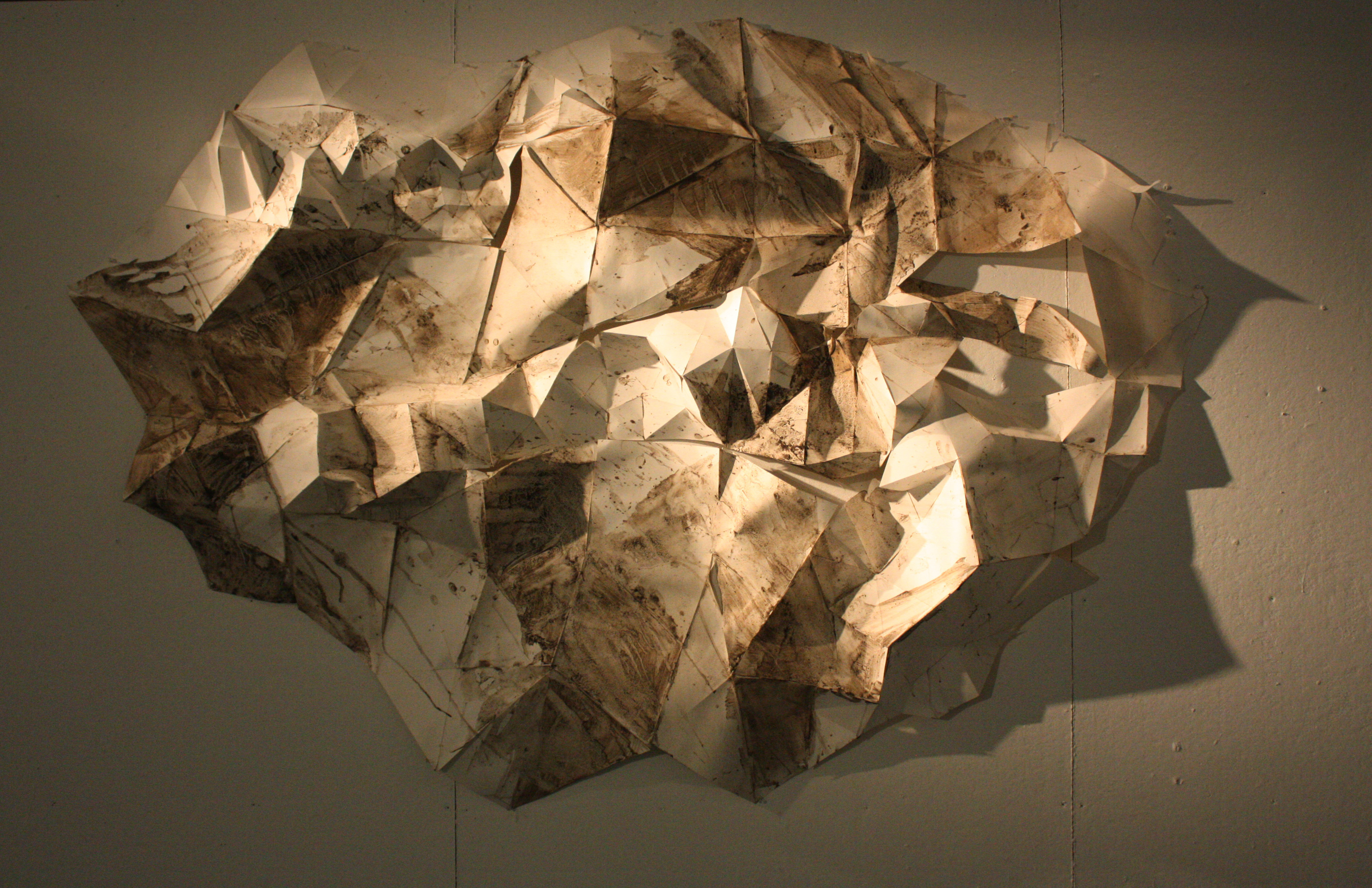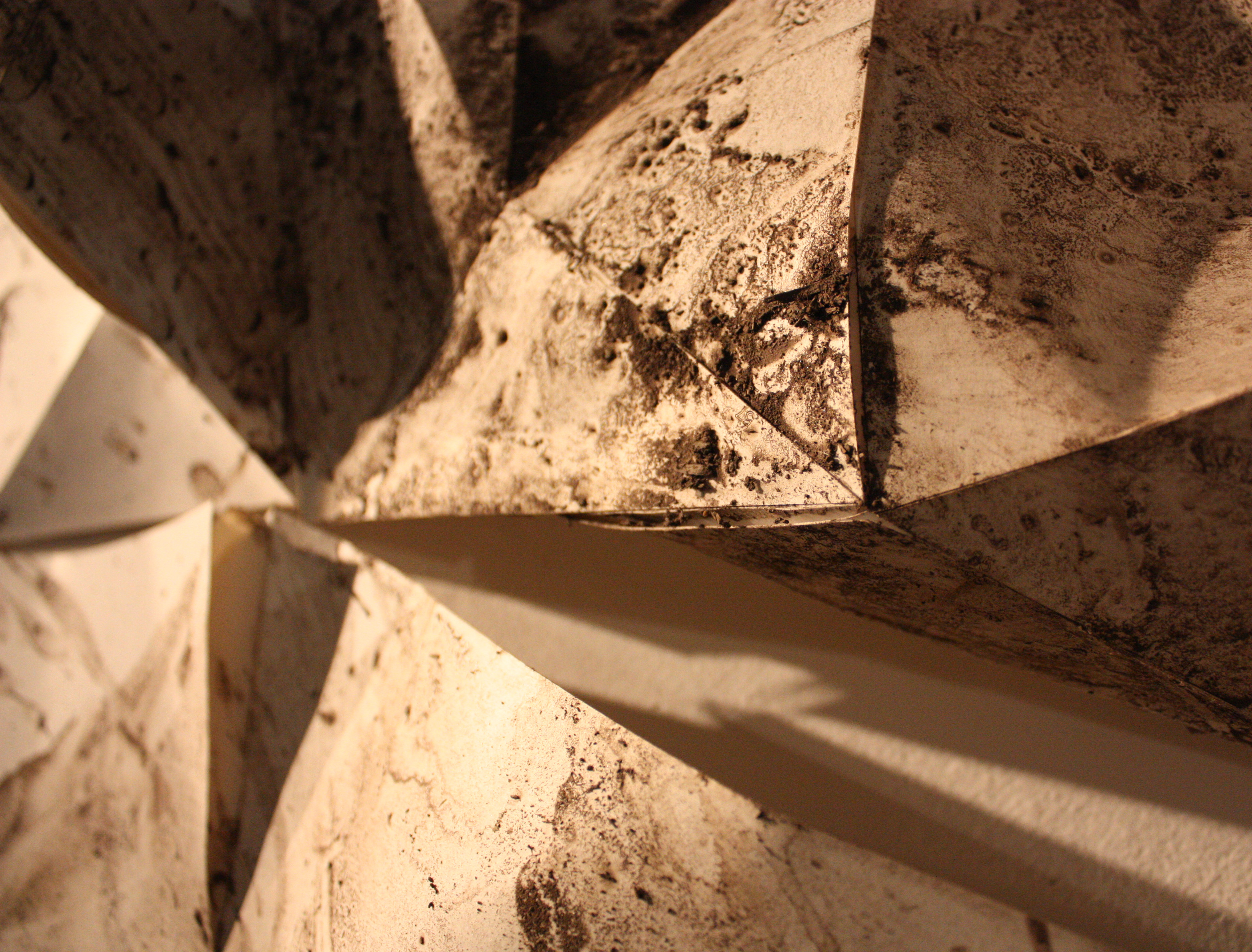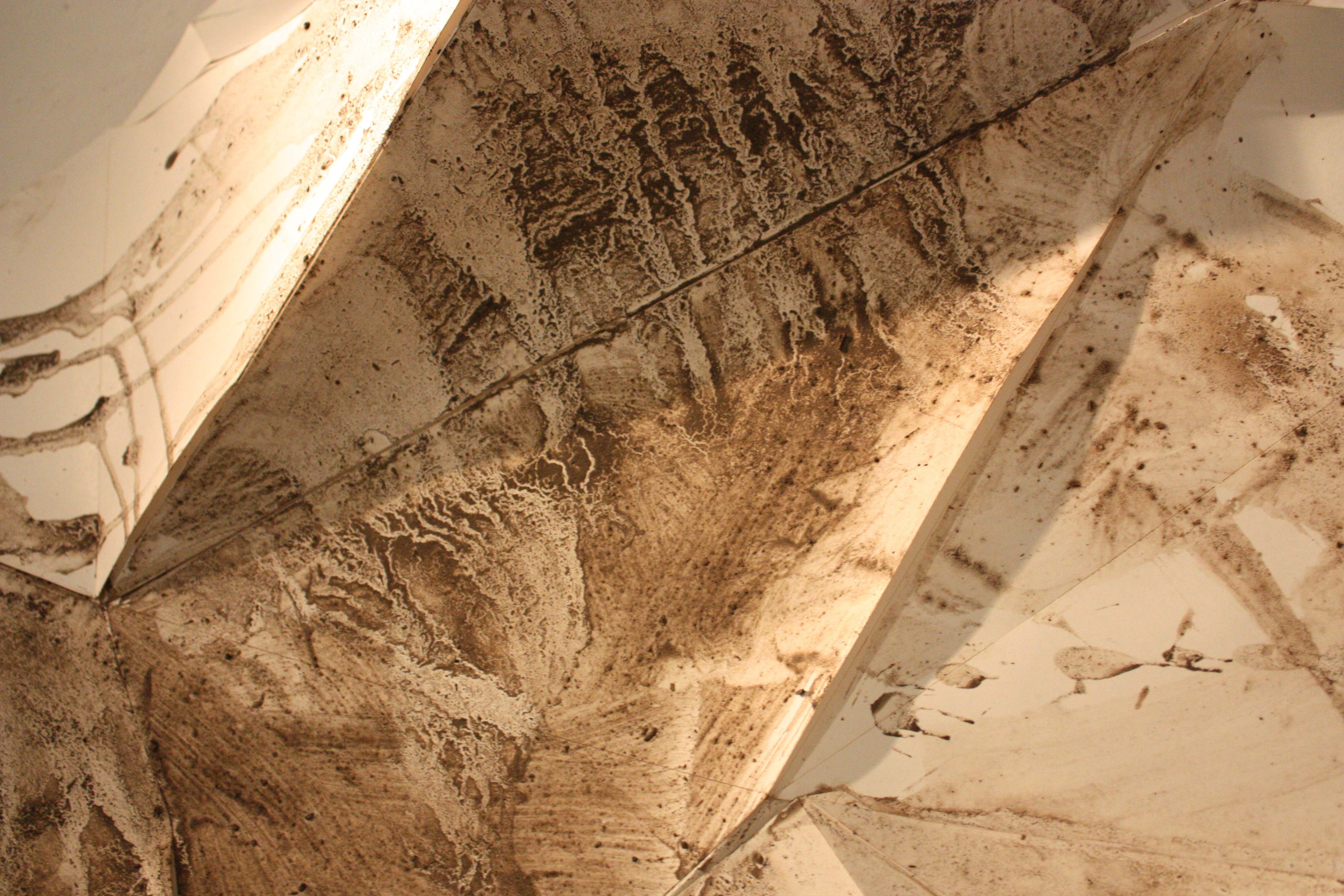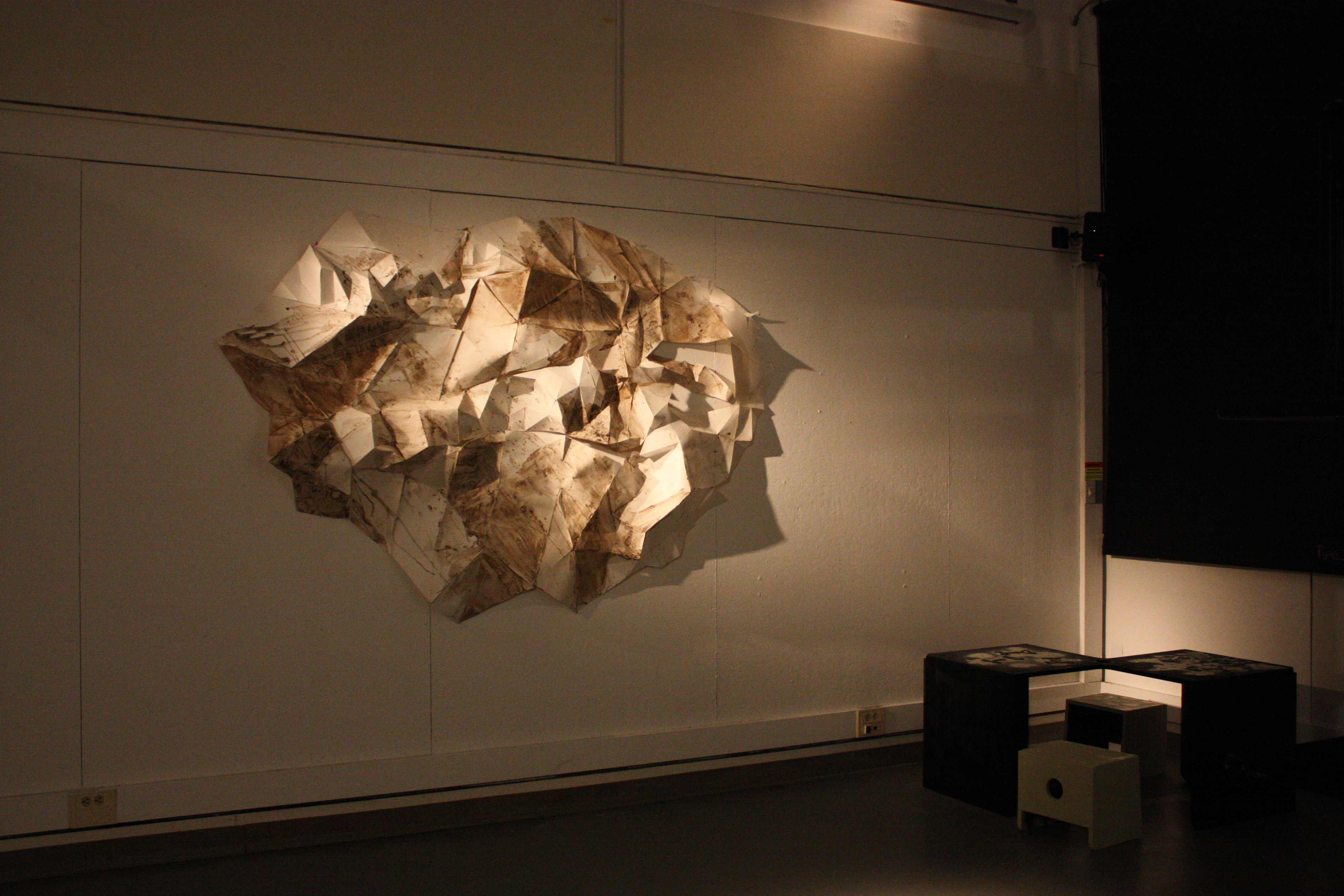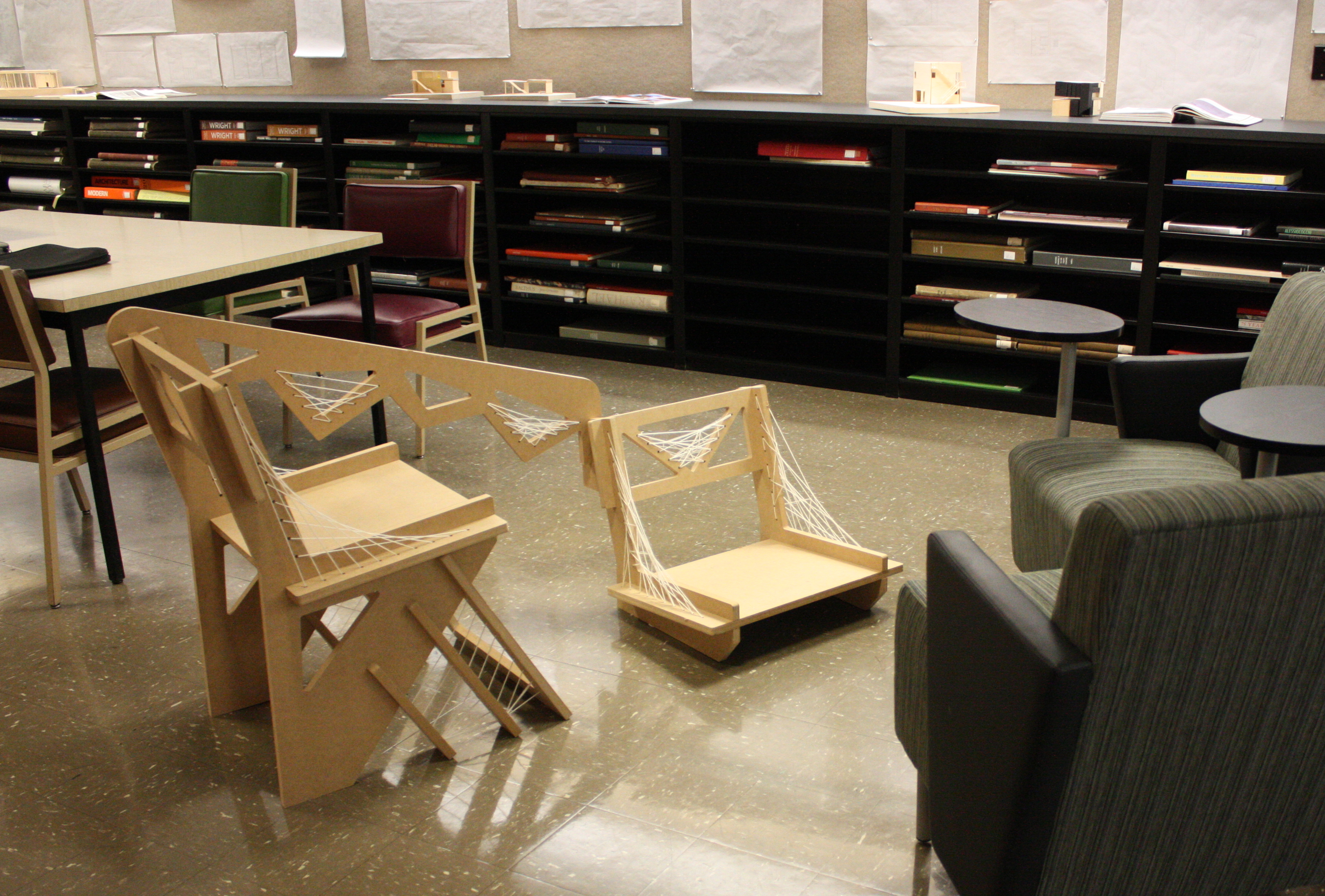
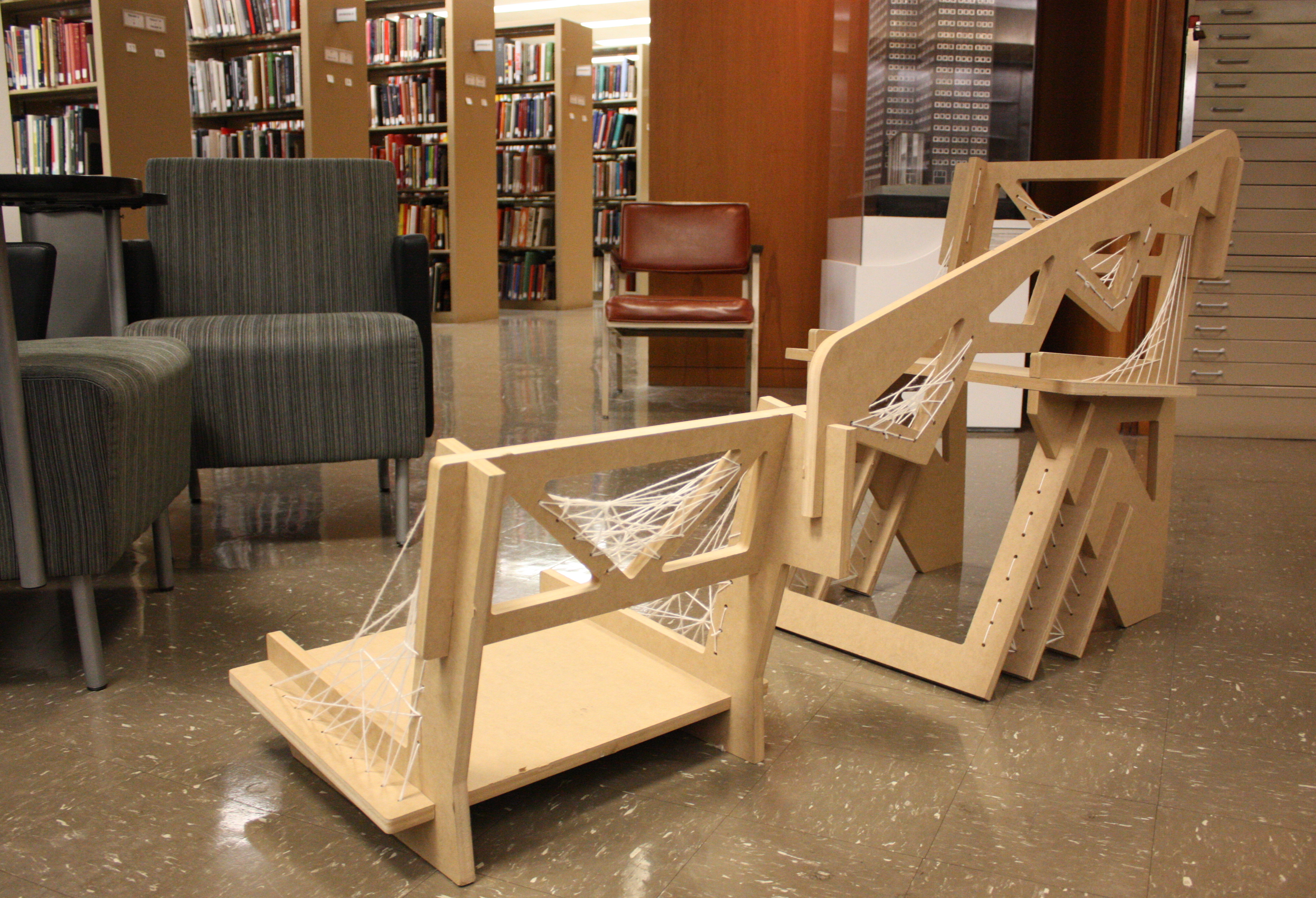
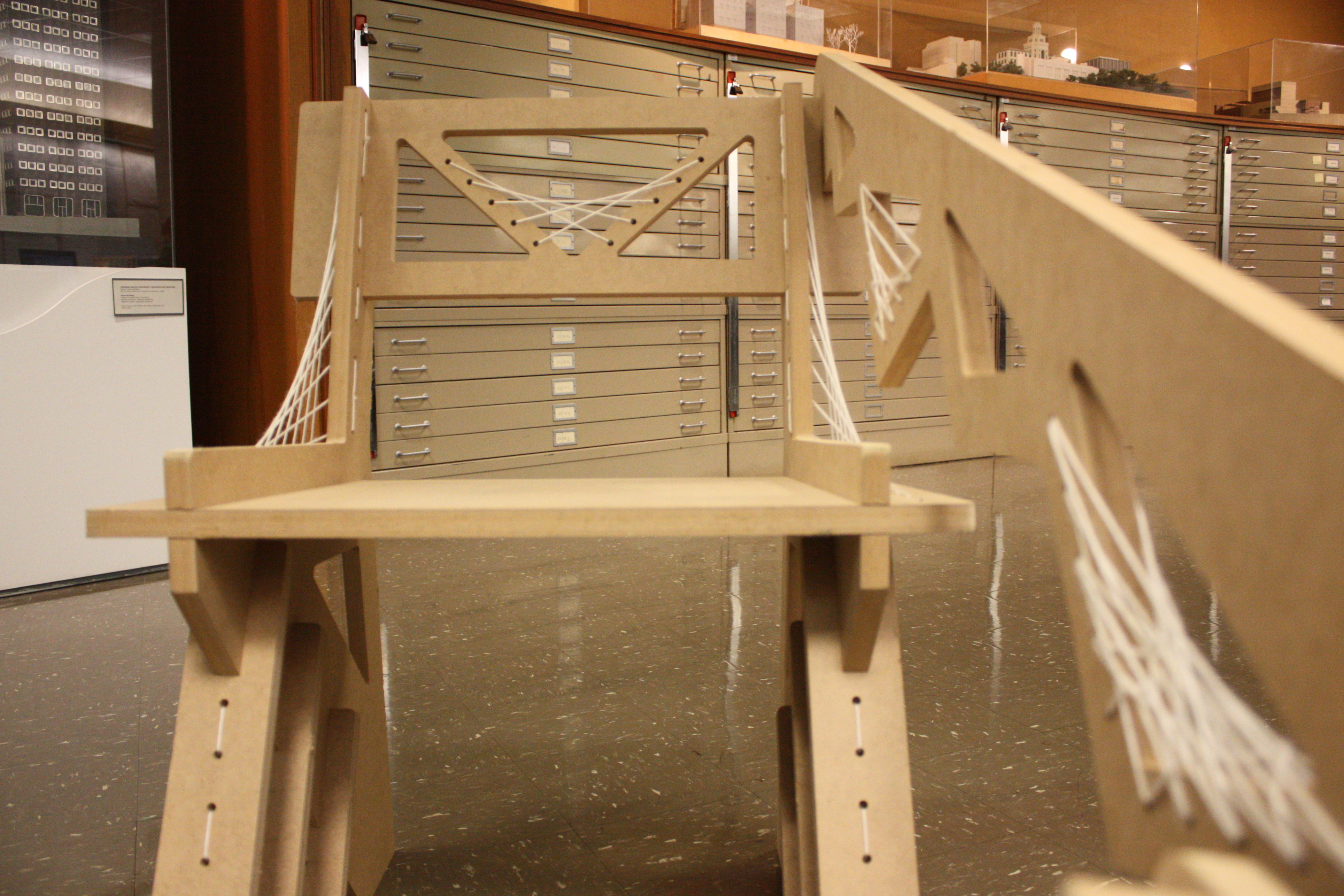
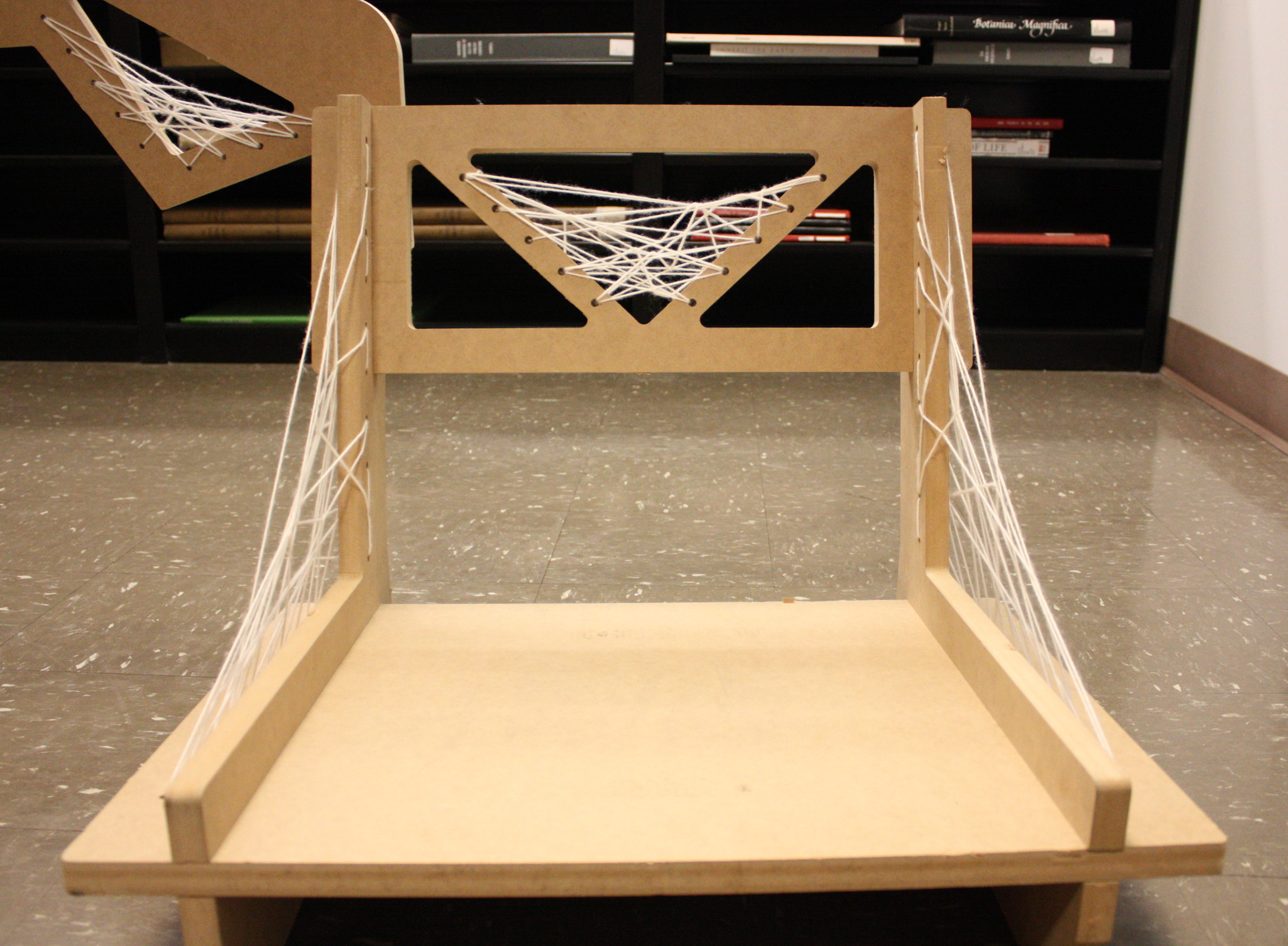
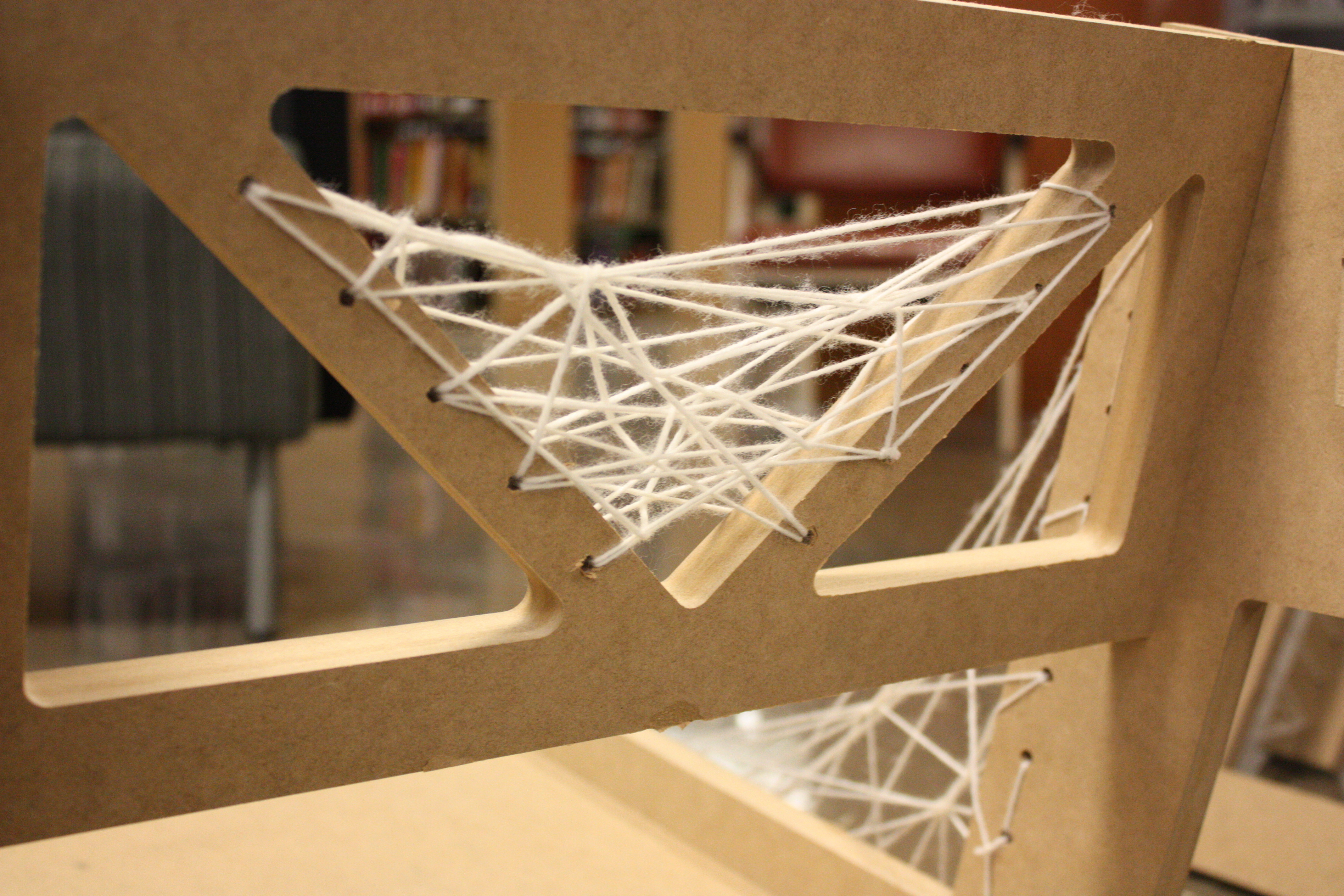
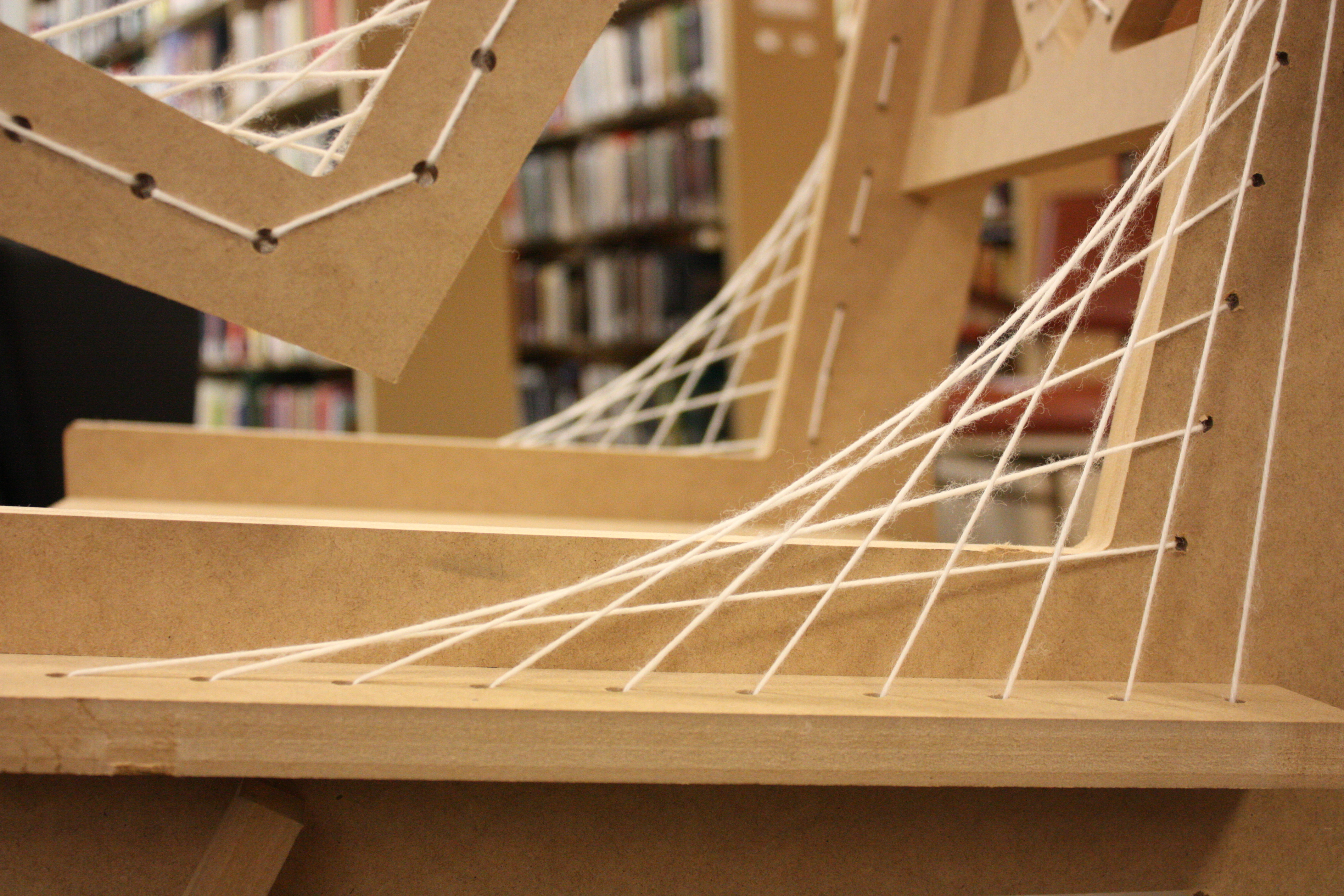
For this iteration of my “two chairs” project, I continued with my concept of a strained relationship between two students working on a project together. I have made several changes however: first, I did away with the small triangular pieces which were originally placed along many of the chairs’ edges. Second, to add interest to the chairs, I used drilling operations to create holes in the chairs through which I wove string, creating webs and curves reminiscent of suspension bridge structures. These references to architecture have lead me to become slightly more specific as to who I envision sitting in these chairs: I now see it as a conversation between two architecture students. Third, and related to this idea that this conversation is between architecture students, I have chosen an installation location that differs from my original plan. The chairs are now placed in the group workspace of Hunt library where many architectural models may be found. I chose to leave my chair unpainted with the bare MDF exposed to reference the architectural prototypes which are often made of similar material.


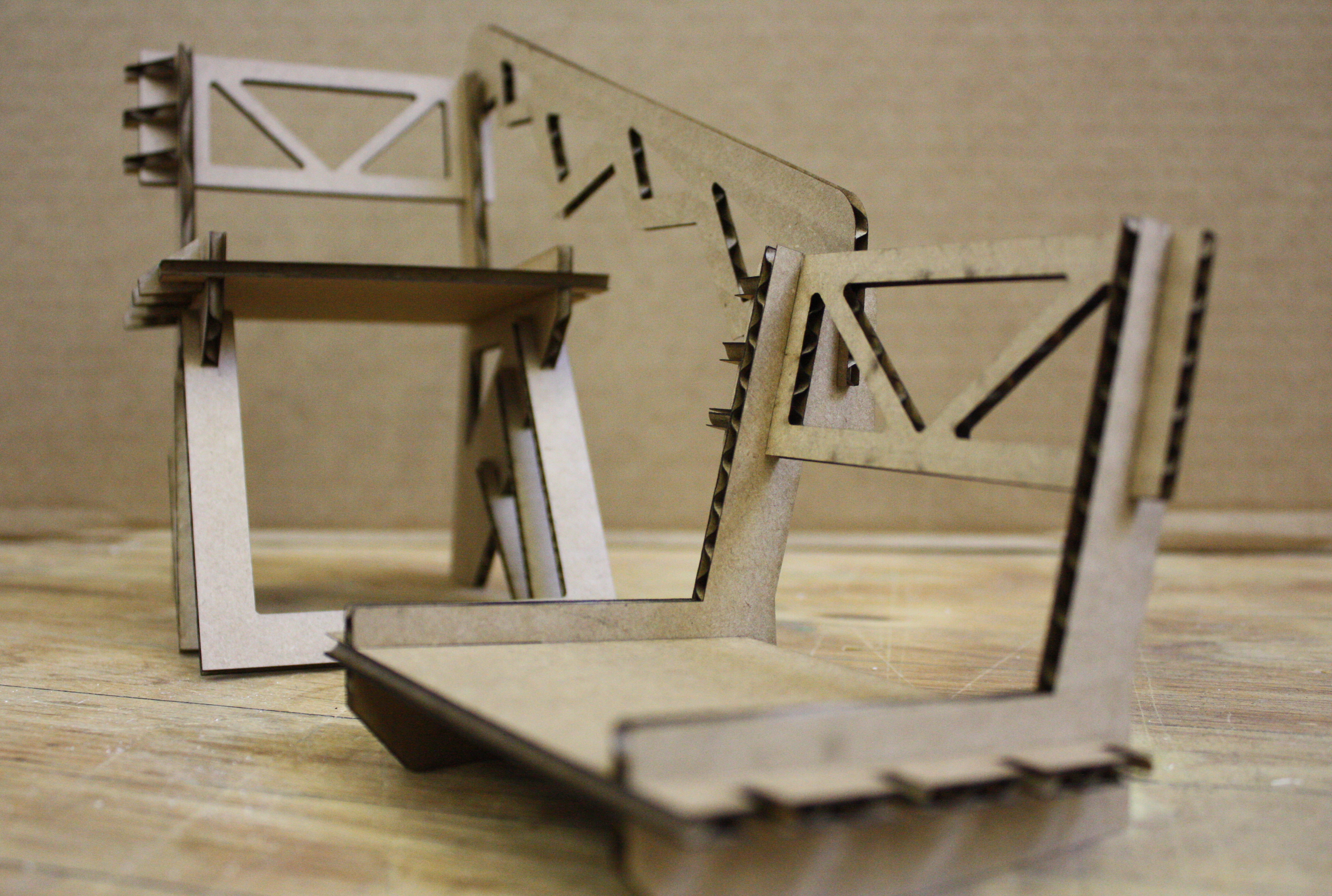

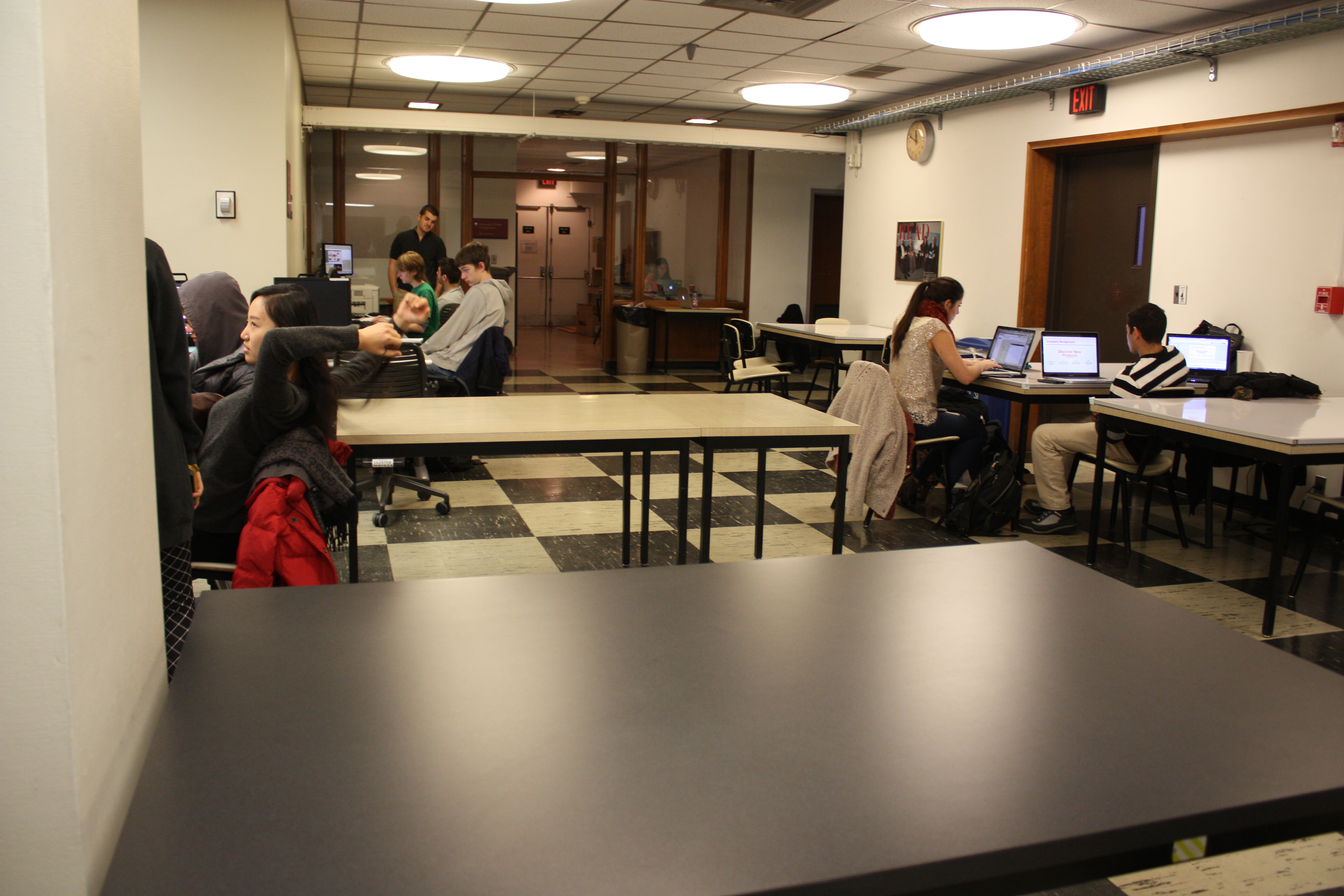

There is something inherently awkward about randomly assigned partnerships. Initially, when two students are tasked with working together on an assignment, they are equal. Tasks are fairly divided, and things seem to be going smoothly. But the inevitable happens, and slowly but surely the power dynamic between the two group members becomes more and more imbalanced. The dominant personality, the one with the greater drive, takes over. These two chairs seek to imitate this unbalanced relationship. By placing one chair at typical height, and the other at ground level and turned away, conversation between the people sitting there would become difficult and forced- the occupants could not possibly remain equals. Just by virtue of their positioning, the person in the higher chair would hold the power. And yet the chairs are structurally linked, so the partnership is kept intact despite the imbalance. Once these chairs are produced at their full scale, I intend to install them in the basement of Hunt library, in the workspaces where many groups complete their projects together.







How would it feel if you knew there was always the possibility someone was watching you? In the climate of today’s privacy and information security crises, this imaginary landscape is perhaps not so strange. In the panopticon, you are held captive. A constant presence over you are the ones within the tower, watching- but you cannot see them. The chains of physical imprisonment are replaced by ones of manipulation and fear, and there is no escape.
This panopticon is constructed from 131 pieces of clear and black acrylic. 131 is appropriate being both prime, reflecting the harsh concept which this piece explores, and palindromic, reflecting the symmetry of the piece. By far the most common shape used is the triangle- the visual strength of this polygon, and the sharp angles allow for the sculpture to take on a fortress-like form. The clear pieces represent everything that is under watch, especially the upright triangles immediately surrounding the center tower. These pieces are the only ones without symmetry in their orientation, as they represent the prisoners within the panopticon. The opaque black pieces represent those who are watching, and who cannot be watched themselves. These pieces are concentrated into two areas: the center tower, from which all of the “prisoner” pieces might be viewed, and the small pieces along the outside ring, which serve to convey the idea that there is no escape from the panopticon.

“Nomadic Wonderland” by Eunsuk Hur is a series of combined wall installations and fashion pieces. To create this work the artist modeled a myriad of abstract forms both organic and geometric, to be cut out in leather and felt using a laser cutter. Each piece includes several slots, so that one may fit into the others, creating a continuous modular textile. Since no adhesive is used, the pieces may be reworked into many different shapes as the artist sees fit.
More…

“Dreamcatcher” by Marilène Oliver is a sculpture consisting of of laser cut acrylic and ostrich feathers. The life-sized female form, suspended and floating in a dark void, was created using 3D scan data from an anonymized female form called “Melanix.” Each slice being a cross-section of the body, together the layers create the impression of a form that is at once solid as a human body should be, and hollow as a ghost of the true form.
More…

This artwork, “Hylozoic Soil” by Phillip Beesley, is one of several installations in a series of empathetic, reactive environments. Hundreds upon hundreds of pieces of laser cut acrylic (and many other plastic and metal components as well) are assembled together into a network of appendages, each controlled by arduinos so that they will react to the touch of the viewer. As the title suggests, the theme of this piece is centered on the idea of hylozoism, which asserts that all matter (not just things that are traditionally seen as alive) is indeed living.
More…

